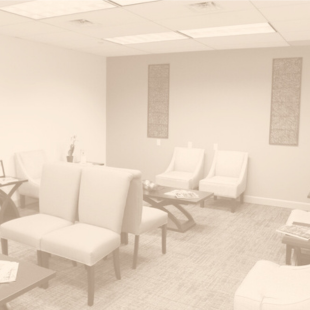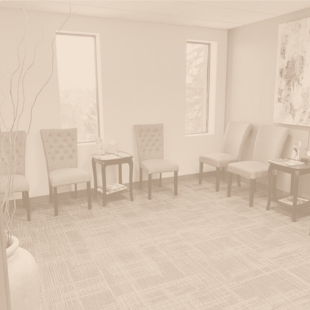Fat Transfer Surgery
Fat Transfer Procedure Process
& Ideal Candidates
A fat transfer, also known as fat grafting procedure, is a cosmetic procedure in which fat is removed from one area of the body through liposuction and then purified and injected into another area to add volume, contour, or improve appearance. Common areas where a fat transfer is used include the face, breast, and buttocks. It is important to know that not all fat survives, a portion of the fat transferred may not take and the patient may require a touch up procedure.
What To Consider
Natural-looking results
Dual benefits
Long-lasting effects
Schedule Your Fat Transfer Consultation
During your consultation, our fat transfer surgeon Dr. Antimarino will walk you through a series of questions to determine your concerns, goals and expectations. Dr. Antimarino will discuss with you any medical conditions you may have or treatments you are going through, what medications you may be taking, and any previous surgeries. Be prepared to discuss outcomes of a fat transfer procedure and have the doctor take photos of you for a more accurate evaluation.
Pre-Op Care
Depending upon a patient’s age and medical condition there may be preoperative laboratory testing required. This will need to be completed within 2-4 weeks of fat redistribution surgery and is typically covered by the patient’s insurance. Patients are asked to maintain their usual activity level and body weight from the time of consultation to their surgical date. Patients are required to stop smoking, vaping, and the use of nicotine patches, gum and marijuana one month before fat transfer plastic surgery and a minimum of one month post surgery. Patients are also required to stop using weight loss medications 2 weeks prior to their surgery. Surgery may be canceled if guidelines are not followed.
Frequently Asked Questions
What areas can a fat transfer be used on?
A fat transfer is commonly used to restore volume lost with aging to the face in the cheeks, under-eyes, temples, and jawline. Fat may also be used to add volume and contour the breasts and buttocks.
What are the benefits of fat transfer over implants or fillers?
Natural results: Since fat is your body’s own tissue, the results tend to look more natural and feel more authentic.
Less risk of allergic reactions: There’s no risk of implant rejection or allergic reaction, as it’s your own fat.
Dual benefit: You get body contouring (via liposuction) in the donor area (like the abdomen, thighs, or flanks) in addition to enhancing the target area.
How long do fat transfer results last?
The longevity of a fat transfer depends on how much of the transferred fat survives the process. After the procedure, some fat will be absorbed by the body, but the remaining fat typically remains in place for several years. Maintenance or touch-up procedures may be necessary if there’s significant fat loss.
Is body fat transfer a safe procedure?
A fat transfer is generally considered safe, but, like any surgery, it carries risks. Common risks include infection or bruising at the liposuction site or the injection site. Fat necrosis can occur and form lumps or cysts, though this is rare.
How is the fat transferred to the desired area?
The procedure involves using liposuction to remove fat from a donor site (such as the abdomen, thighs, or flanks). The fat is then purified to separate healthy fat cells from other fluids. Finally, the purified fat is carefully injected into the target area using small needles, often in multiple layers to ensure even distribution and natural-looking results.
Is there a lot of downtime or recovery after a fat transfer?
Liposuction and a fat transfer are considered minimally invasive procedures, but recovery time varies depending on the extent of the procedure. You may experience swelling, bruising, and discomfort in both the donor and treated areas. Most patients can return to light activities after 1-2 weeks. Swelling typically subsides within 4-6 weeks, but it can take up to 6 months for the final results to settle, especially in areas like the face or buttocks. You may need to refrain from intense physical activity for 4-6 weeks to ensure proper healing.
How much fat is needed for a noticeable change?
The amount of fat needed depends on the size and type of the area being treated. The face may require a small amount where the breast and buttocks may require a much larger amount for significant enhancement. Some people may need multiple sessions if they desire a larger change, as only a portion of the transferred fat survives.
Testimonials
What Our Patients Are Saying
After I consulted with three different doctors, I knew Dr. Antimarino was the right one to choose. He thoroughly explained all my questions about my procedure, which made me very comfortable. The staff and Dr. Antimarino were very accommodating. I would highly recommend him.
HEALTHGRADE
If you are looking for a doctor to put you first, not the money, a doctor that will truly listen to you in order to help you achieve your goal, a doctor that will be honest with you and always have your best interest at heart…..then it’s Dr. A hands down!
Dr. Antimarino was absolutely amazing. After my surgery, I had some questions and concerns and he was right there to take care of them! I love the results.
HEALTHGRADE
Surgery & Post-Op Care
Fat Transfer is an outpatient procedure performed under general anesthesia.
Patients will experience mild to moderate swelling that lasts about 2-3 weeks depending on the amount of fat transferred. Downtime is approximately 2 weeks and the patient may resume exercise in approximately 4-6 weeks depending on the area grafted.
Fat has a variable amount of reabsorption which can vary from patient to patient. The results are longer lasting than dermal fillers used in the face but the fat may require secondary injections to achieve the desired outcome.
Related Procedures
Our Locations

Shadyside
5301 FIFTH AVENUE, SUITE A,
PITTSBURGH, PA 15232
GET DIRECTIONS
Fri: 8 am – 4:00 pm

Monroeville
117 FOX PLAN ROAD, SUITE #300,
MONROEVILLE, PA 15146
GET DIRECTIONS
Fri: 8 am – 4:00 pm

